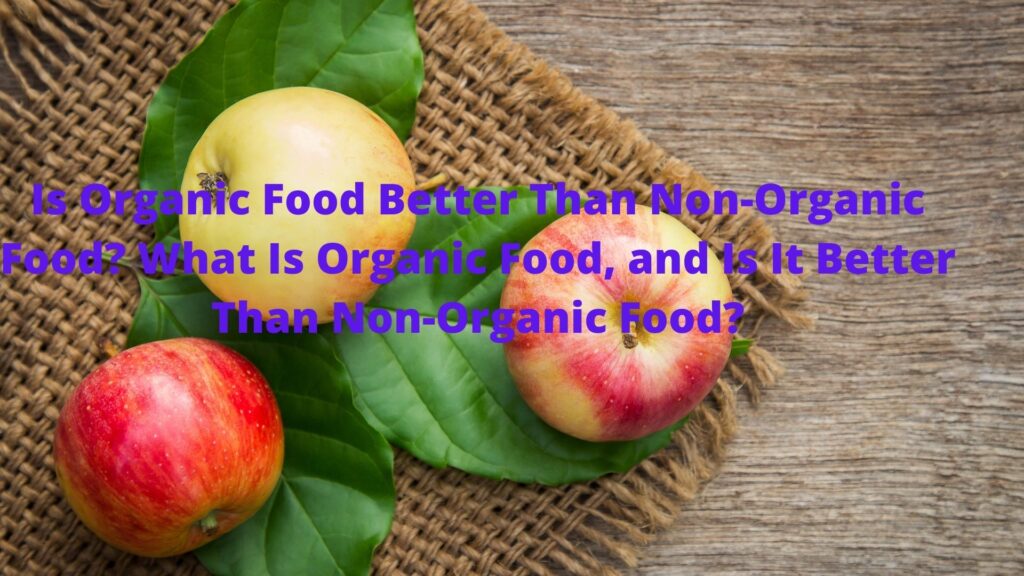The nutritional composition of organic and non-organic foods, as well as their effects on human health, are compared in this article.
Also Read: Organic Living
What does it mean to eat organic food?
The term “organic” refers to the methods used in the manufacturing of specific foods. The following chemicals have not been used in the production of organic foods:
- chemicals made in a lab
- hormones
- antibiotics
- creatures that have undergone genetic modification
A food product must be free of artificial food additives in order to be labelled organic. Preservatives, artificial sweeteners, colourants, flavours, and monosodium glutamate are just a few of the ingredients that can be found in food.
Natural fertilisers, such as manure, are frequently used in organically cultivated crops to enhance plant development. Organically reared animals are not given antibiotics or hormones.
Organic farming has been shown to improve soil quality and conserve groundwater. It could also help the environment by lowering pollution.
Fruits, vegetables, cereals, dairy products, and meat are the most popular organic foods. Organic processed foods, such as drinks, cookies, and meat substitutes, are also available.
Organic foods may have a higher nutrient content than non-organic ones.
There have been inconsistent results in studies comparing the nutritious content of organic and non-organic foods.
The most likely cause is natural variances in food handling and production. Organically grown foods, on the other hand, appear to be healthier, according to statistics.
Antioxidants and vitamins are more abundant in organically cultivated crops.
Organic foods contain higher quantities of antioxidants and certain micronutrients, such as vitamin C, zinc, and iron, according to several older research..
Furthermore, according to one study, substituting organic fruit, vegetables, and cereals for their conventional counterparts will help you receive more antioxidants in your diet. This was the equivalent of increasing your daily fruit and vegetable intake by 1–2 servings.
Chemical pesticides are not used by organic plants to protect themselves. Instead, they boost the creation of self-defense chemicals like antioxidants.
This could explain why some plants contain more antioxidants than others.
In general, nitrate levels are lower.
Nitrate levels have also been found to be lower in organically cultivated crops. In fact, research has shown that these crops had 30 percent lower nitrate levels.
They’re also linked to methemoglobinemia, an infantile disease that impairs the body’s ability to transport oxygen.
Organic dairy and meat may have a better fatty acid composition than conventional dairy and meat.
Organic milk and dairy products may have somewhat higher quantities of omega-3 fatty acids, iron, vitamin E, and certain carotenoids than conventional milk and dairy products.
On the other hand, organic milk may have less selenium and iodine than non-organic milk. These are two minerals that must be consumed in order to maintain excellent health.
According to a review of 67 research, organic beef has higher amounts of omega-3 fatty acids and somewhat lower levels of saturated fats than conventional cattle.
Several other research, on the other hand, revealed no changes.
While numerous studies have demonstrated that organic foods can have considerable positive effects, others have concluded that there is insufficient evidence to advocate organic over conventional meals.
Although the organic group ingested much more of specific nutrients, this was most likely owing to an increase in overall vegetable consumption.
A study of 35 trials indicated some good results related to organic food, but no conclusive conclusion could be drawn.
However, it’s vital to keep in mind that the outcomes of these studies vary a lot.
This is due to the fact that the nutrient content of food is affected by a variety of factors, including soil quality, weather conditions, and when crops are harvested.
Differences in animal genetics and breed, what the animals consume, the time of year, and the style of farm can all alter the composition of dairy products and meat.
Comparisons are challenging due to the natural variances in food production and handling. As a result, these investigations’ findings are inconclusive.
Suggested Read: Swachhbharat
